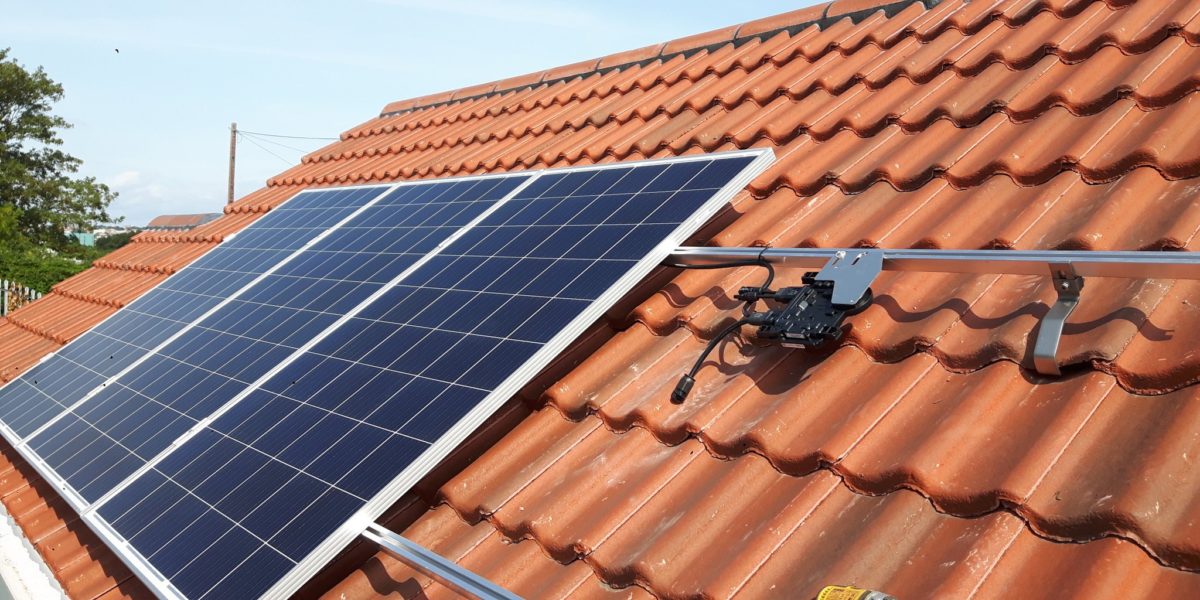In less than nine months, no permits will be approved for a new home in California that doesn’t include solar power of some sort. It is still not clear what portion of these homes that will come with a contract with a centralized community solar plant, and whether we’ll see 70,000 or 125,000+ new solar homes per year. Regardless, utilities must prepare.
Pacific Gas & Electric Company (PG&E) wanted to first better understand if and how smart solar inverters could address power quality problems as solar penetration levels on homes approach 100%, and then to understand the financial effects. The broad conclusion was that when penetration levels hit 100%, smart inverters – via management of Volt-VAR and Volt-Watt functions – could mostly keep the grid from experiencing significant voltage violations or thermal issues. They also found a very limited economic impact over 10 years, either positive or negative, when compared to traditional upgrades with a total net present value of -$4 per customer (net cost) to$57 per customer (net benefit) over 10 years.

The baseline analysis of the report, EPIC 2.03A: Smart Inverters: Modeling Report (pdf), looked at penetration levels ranging from 20% to 100% of homes with solar (above image), with each of these homes building enough solar power to meet 100% of their annual kilowatt-hour usage.
In the baseline analysis, PG&E modeled that in all six cases, there needed be some hardware upgrades to get the feeders beyond 75% penetration levels. Extremes of the six feeders showed M needing upgrades to get beyond minimal levels before voltage violations of thermal issues arose (noted as “TRUE” in above chart), whereas, feeder N got near to 100% before it had thermal overload issues.
The analysis then looked at conventional tools to accommodate these penetration levels on low and medium voltage levels via transformer upgrades first and then secondary circuit upgrades. While the service transformer replacements triggered by PG&E’s current decision rule for voltage violations were found to not suppress all the voltage rise issues, significant improvements were observed.
The utility concluded the strategy leveraging SI Volt-VAR and Volt-Watt functions was shown to reduce, but not entirely suppress over-voltage conditions – which it wasn’t expected to. Still, the reduction observed was generally comparable, and sometimes superior to the level of performance obtained with conventional upgrades.
Smart inverter functions provided some reduction in voltage rise issues but were not as effective as conventional measures in addressing extreme issues but neither smart inverter functions nor conventional measures fully addressed all violations. Although not intended to address voltage rise issues, smart inverter functions provided some voltage rise reduction whether or not a secondary VRS was conducted.
The utility found that active power curtailment, resulting from the activation of smart inverter functions, appeared extremely limited: across all combinations of feeders, functions, inverter densities, and PV and load conditions considered, only 45 of the 8,414 PV installations modeled experienced active power curtailment greater than 1% across any of the analyzed 24-hour periods.

Miguel Hernandez from EPRI’s Power Systems Studies group and another principal researcher of the effort noted:
We modeled more than 15,000 scenarios across six feeders using multiple technology penetration levels, load conditions, and PV generation profiles. Based on our extensive literature review, we believe this is the first report to take a holistic approach to the distribution system—from the grid to the home, and back—when modeling impacts of PV and smart PV inverters. This bigger picture could inform distribution network investments for utilities around the world.
The savings resulting from these avoided costs are expected to benefit PV developers as well as utility customers (and they already have to the tune of at least $2.6 billion). The effort’s findings suggest measurable gains for electric utilities that address the effects of smart inverters on distribution systems with extensive PV penetration and support further investigation.
This content is protected by copyright and may not be reused. If you want to cooperate with us and would like to reuse some of our content, please contact: editors@pv-magazine.com.








By submitting this form you agree to pv magazine using your data for the purposes of publishing your comment.
Your personal data will only be disclosed or otherwise transmitted to third parties for the purposes of spam filtering or if this is necessary for technical maintenance of the website. Any other transfer to third parties will not take place unless this is justified on the basis of applicable data protection regulations or if pv magazine is legally obliged to do so.
You may revoke this consent at any time with effect for the future, in which case your personal data will be deleted immediately. Otherwise, your data will be deleted if pv magazine has processed your request or the purpose of data storage is fulfilled.
Further information on data privacy can be found in our Data Protection Policy.